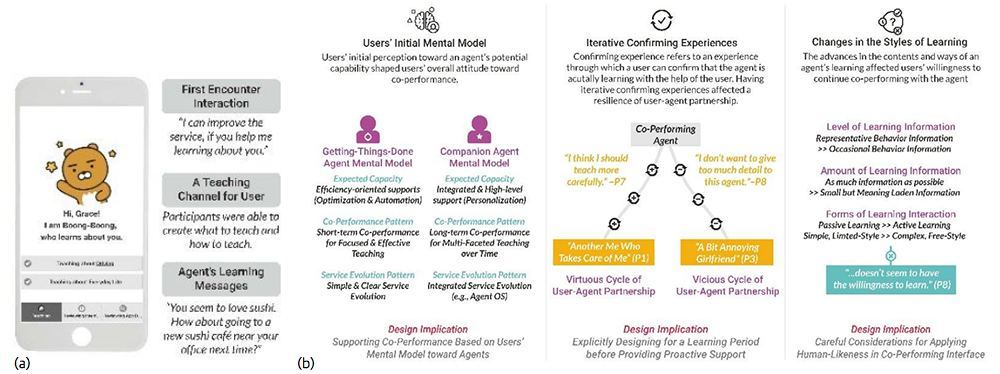As a part of the AI Flagship research project supported by IITP, Professor Youn-kyung Lim’s team has studied how to design an intelligent assistant that can co-evolve with its user to be able to provide meaningful and effective personalized services. The leading researcher of this study was Dr. Da-jung Kim; she completed her Ph.D. in the Department of Industrial Design at KAIST this February under Prof. Lim’s guidance, and this study was one of the main studies for her Ph.D. thesis.
In this study, it was discovered that people expect different qualities of interaction with AI assistants over time. The patterns of user expectation change over time and are different based on their initial mental models toward an AI assistant. For example, the team discovered that there are two different types of the mental models: 1) a Getting-Things-Done (GTD) mental model with which users tend to think that the assistant’s capability to improve the service is limited to machinery optimizations, and 2) a Companion mental model in which users think that the assistant has the capability to acquire a deeper understanding of its user and to improve the service not only for machinery optimization, but also for more personally nuanced support. Based on which mental model users have, users want to teach the assistant in different ways, and also expect to receive different types of service over time. However, the currently existing AI assistants do not provide a salient channel for accommodating such mental models, nor a way of co-evolving with its user in the service personalization process. In this study, they proposed and designed a new concept of an intelligent assistant that can co-perform with a user considering these mental models, allowing user to teach the assistant more effectively over time (Figure 1(a)). Figure 2(b) shows the overall key findings regarding the factors that affect user co-performing behaviors with the co-performing agent they proposed. The outcome from this study will be published as a full paper in ACM CHI 2019, which is the highest-ranked conference in the area of HCI on Google Scholar.

Dajung Kim, Prof. Youn-kyung Lim Department of Industrial Design, KAIST
Homepage: http://cixd.kaist.ac.kr
E-mail: younlim@kaist.ac.kr






